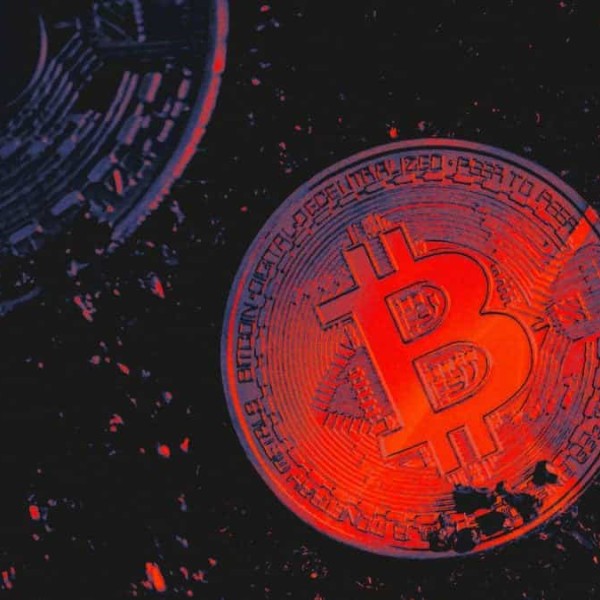Ethereum News Today: Institutional Capital Shifts: Ethereum ETFs Outpace Bitcoin in Surge
- VanEck CEO Jan van Eck highlights Ethereum's rising institutional adoption, calling it the "Wall Street token" due to surging ETF inflows outpacing Bitcoin. - Ethereum ETFs attracted $1.83B in 5 days (vs. $171M for Bitcoin), with $13B cumulative inflows since mid-2024 despite price dips. - Institutional investors view Ethereum's DeFi/stablecoin utility as a strategic asset, supported by regulatory clarity from the July GENIUS Act. - Goldman Sachs leads Ethereum ETF holdings at $712M, but Bitcoin ETFs sti
VanEck CEO Jan van Eck has highlighted the growing institutional interest in Ethereum , describing the digital asset as potentially the “Wall Street token” due to its increasing adoption among investment advisers and asset managers. This assessment comes amid a surge in inflows for Ethereum-based exchange-traded funds (ETFs), which have outpaced their Bitcoin counterparts in recent weeks. According to data from CoinGlass and SoSoValue, Ethereum ETFs have attracted over $1.83 billion in inflows over the past five trading days, significantly more than the $171 million recorded by Bitcoin ETFs during the same period [3]. The trend continued on August 25, when Ethereum ETFs saw $443.9 million in net inflows compared to $219 million for Bitcoin ETFs [4].
The momentum behind Ethereum ETFs appears to be gaining strength, with cumulative inflows reaching nearly $13 billion since their launch earlier this year. This represents a significant shift in investor preference, particularly given that Ethereum ETFs only became available in the U.S. in mid-2024, whereas Bitcoin ETFs had been in existence for 20 months prior. Despite Ethereum’s price decline of over 8% to around $4,420 on August 25, institutional investors continued to view dips as buying opportunities, a trend that analysts attribute to the asset’s utility in the decentralized finance (DeFi) and stablecoin ecosystems [4].
The growing inflow of capital into Ethereum ETFs has also been accompanied by a rise in the asset’s relative performance. Ethereum has recovered faster than Bitcoin this week, with prices climbing 5% from their Tuesday low, compared to Bitcoin’s 2.8% gain. This outperformance has not gone unnoticed in the industry. Anthony Sassano, an Ethereum educator and investor, referred to the trend as “brutal,” while Nate Geraci of NovaDius Wealth Management noted that spot Ethereum ETFs are now nearing $10 billion in inflows since the beginning of July [3].
VanEck’s CEO has cited the passing of the GENIUS Act stablecoin legislation in July as a catalyst for renewed interest in Ethereum, given its dominance in the stablecoin and tokenized real-world asset market. This regulatory development has provided clarity for financial institutions , encouraging them to allocate capital to Ethereum-based products. According to SEC filings, Goldman Sachs is the largest institutional holder of Ethereum ETFs, with $712 million in exposure, while investment advisers as a group hold over $1.3 billion [3].
Despite the strong inflow trend, Ethereum ETFs still trail Bitcoin in total assets under management, with U.S. Bitcoin ETFs now holding $143.6 billion in assets compared to $28.8 billion for Ethereum ETFs [4]. However, the pace of inflows into Ethereum ETFs suggests that the gap may narrow in the coming months, especially if more institutional players continue to view the asset as a strategic addition to their portfolios. For now, the growing inflow trend underscores Ethereum’s evolving role in the institutional investment landscape, with VanEck and others positioning it as a viable alternative to Bitcoin for a new wave of capital inflows [3].
Source:

Disclaimer: The content of this article solely reflects the author's opinion and does not represent the platform in any capacity. This article is not intended to serve as a reference for making investment decisions.
You may also like
Bitcoin liquidity has been reshaped. Which new market indicators should we focus on?
Currently, the largest holders of bitcoin have shifted from whales to publicly listed companies and compliant funds. The selling pressure has changed from retail investors' reactions to the market to capital impact from institutions.

Strategy Confronts MSCI Head-On: The Ultimate Defense of DAT
Not an investment fund! Why is holding oil allowed but not crypto? How does Strategy criticize MSCI's proposal?

Xiaomi Drives Major Cryptocurrency Integration with SEI
In Brief Xiaomi partners with SEI for cryptocurrency integration in 170 million devices. SEI's stablecoin to power Xiaomi's payment service, MiPay. Bitcoin struggles at $90,000, with potential for further declines.

Tom Lee: Ethereum has bottomed out
BitMine, the world's largest Ethereum treasury company, increased its Ethereum holdings by $460 million last week, taking concrete action to "put its views into practice."
